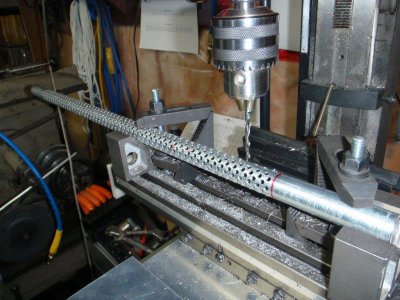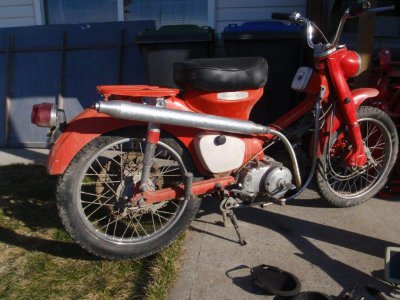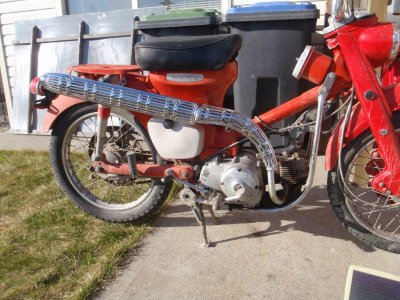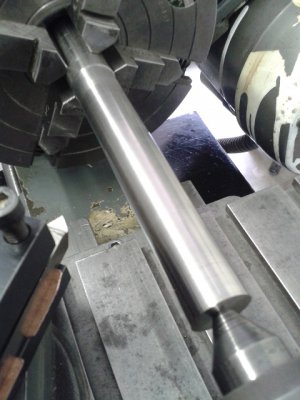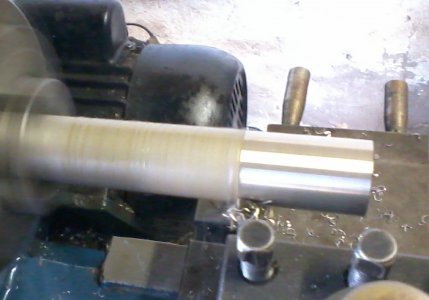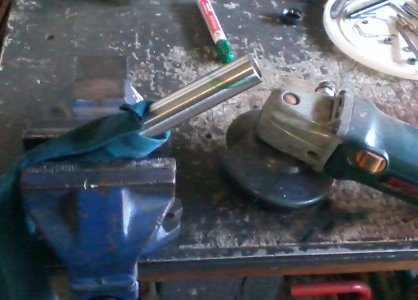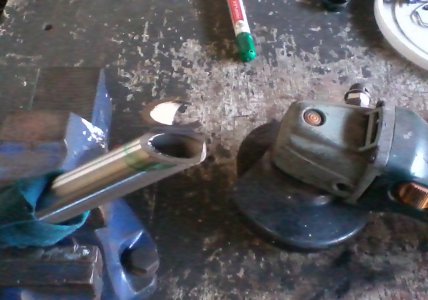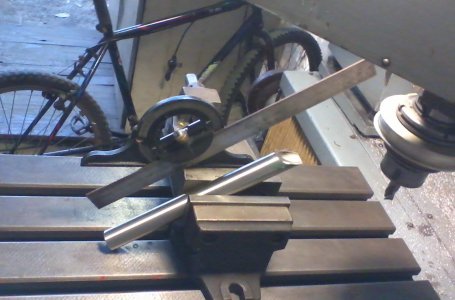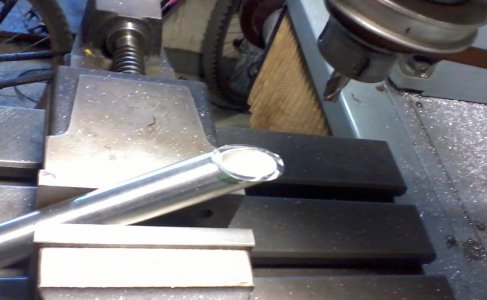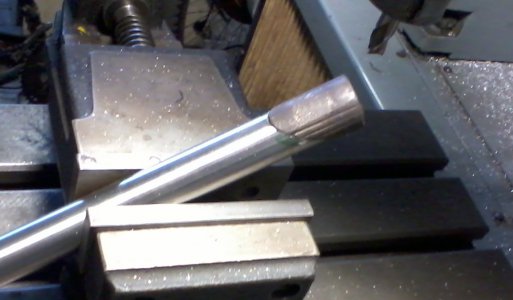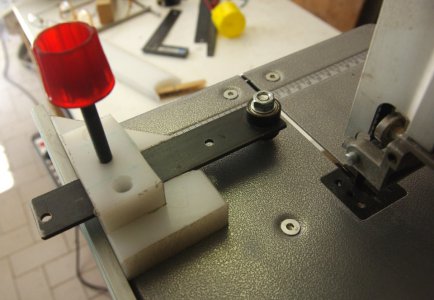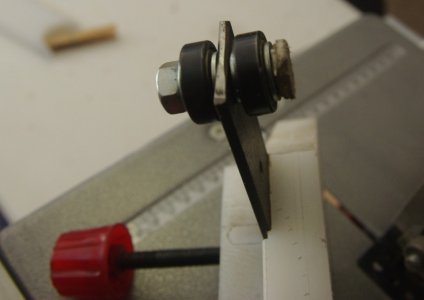Okay, finally finished up my new bench grinder pedestal and downloaded the camera.
I purchased a package of four high durometer rubber/poly feet from the hardware store and made three corner mounted plates for the underside of the base. These were drilled and tapped for a 10-32 screw through the center of the poly foot. I recessed the drilled/tapped plate up under just far enough to allow only about a 3/16" of the foot to protrude below the base. This will keep metal shaving and debris from gathering under the base.
Here is the poly foot attached to the drilled/tapped plate under the base.
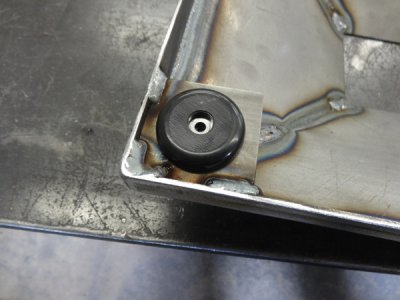
Here you can see roughly how far below the bottom of the base the poly foot protrudes.
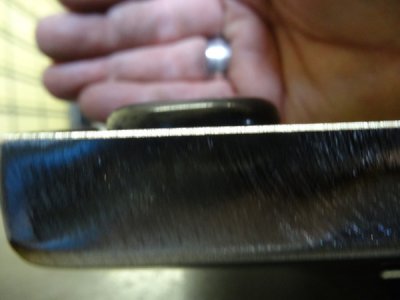
The fourth foot I mounted on a 10" piece of 1/8"x2" wide strap that is welded to the opposite corner of the base. The poly foot is then screwed to the end that is not welded to the base. I fabricated a 1/4" thick piece of steel that is drilled/tapped for a 3/8"-24 set screw that can be adjusted to retract or extend that fourth foot for final adjustment. I drilled a hole through the top of the base in which an allen wrench/T-handle can be inserted and adjust the level of the stand.
Here is the fourth poly foot screwed to the steel strap.
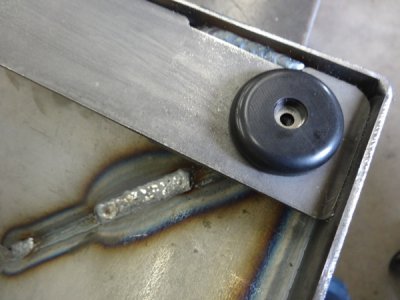
Here is the small opening for the allen wrench for the adjustment.
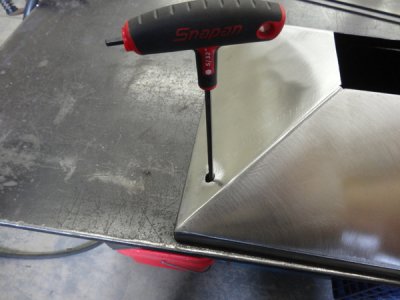
Here is the 3.5" square tube fit and welded into the base.
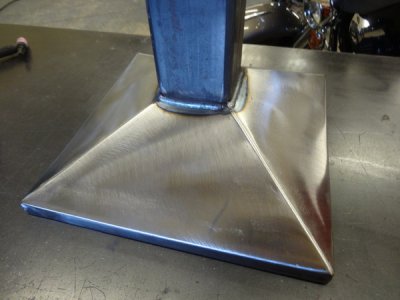
Closeup of one of my welds on the base to column.

Prior to paint I decided to add a small tray to place drill bits or lathe tools on when grinding. I was going to add a small water tray but I have a water container mounted on the disc/belt sander right next to this that I figured I would use rather than have two pieces of equipment with water trays attached.
Here is the frame for the small parts/tool tray. I bent some 1/2" wide .125" thick steel to the shape that I wanted. I also added two triangular mounting tabs which will be used to secure the tray to the column. I didn't want to weld it on so I made it attach by two button head socket machine screws drilled/tapped into the column. After getting the frame bent I placed it on some 12-gauge P&O and traced it, cut it on the vertical bandsaw and TIG welded it together. I then metal finished it and prepped everything for a coat of machinery gray paint.
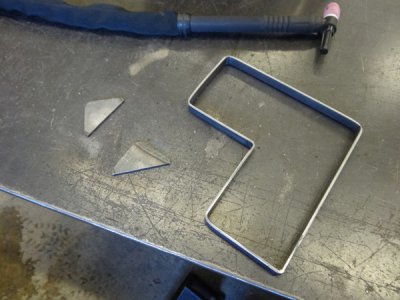
Here is the tray along with the stainless steel button head socket head screws attaching it to the column.
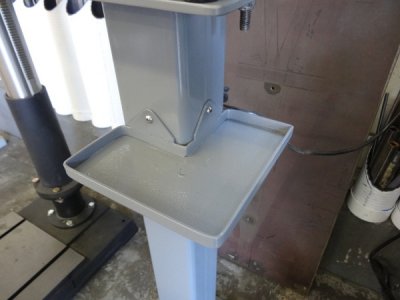
Completed with the Baldor grinder bolted on and ready to use. It looks right at home between the Jet drill press and Wilton disc/belt sander. It looks like it has belonged there all along.
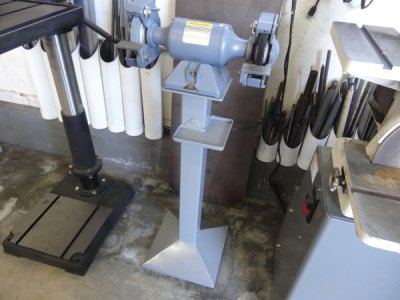
And of course, last but not least the sticker that gives me the warm and fuzzies because without this it would probably kill me if I used it.
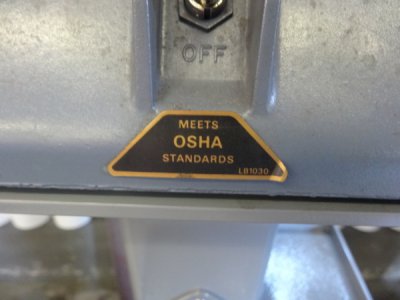
I wish I could take complete credit for the design but I cannot. I stumbled across it on the internet a few months ago and thought to myself that I liked the design. You know what they say, imitation is the the most sincere form of flattery. However, I will be damned if I can remember where I saw it at. I was flipping through machining images on Google and stumbled across it somewhere. I just added my personal touch to it.
Mike.
 )
)
